Michigan has various owl species, each contributing to the state’s rich biodiversity. Ten distinctive owls, varying in size, habitat preference, and behaviors, grace the diverse landscapes.
From the iconic Great Horned Owl to the elusive Boreal Owl, these birds of prey play pivotal roles in the delicate balance of Michigan’s ecosystems.
As silent hunters of the night, they offer essential ecological services, from natural pest control to seed dispersal.
This exploration delves into the captivating lives of these ten owl species, shedding light on their unique characteristics and highlighting their crucial significance in maintaining the health and equilibrium of Michigan’s varied environments.
Join us in unraveling the mysteries and marvels of the ten remarkable owl species that call Michigan home. Stay focused.
10 Owls of Michigan
Michigan’s diverse landscapes host a captivating array of owl species, each contributing to the ecological tapestry in its unique way.
From the adaptable Eastern Screech Owl to the elusive Boreal Owl, explore the lives of these remarkable birds, revealing their habits, challenges, and vital roles in Michigan’s ecosystems.
1. Great Horned Owl
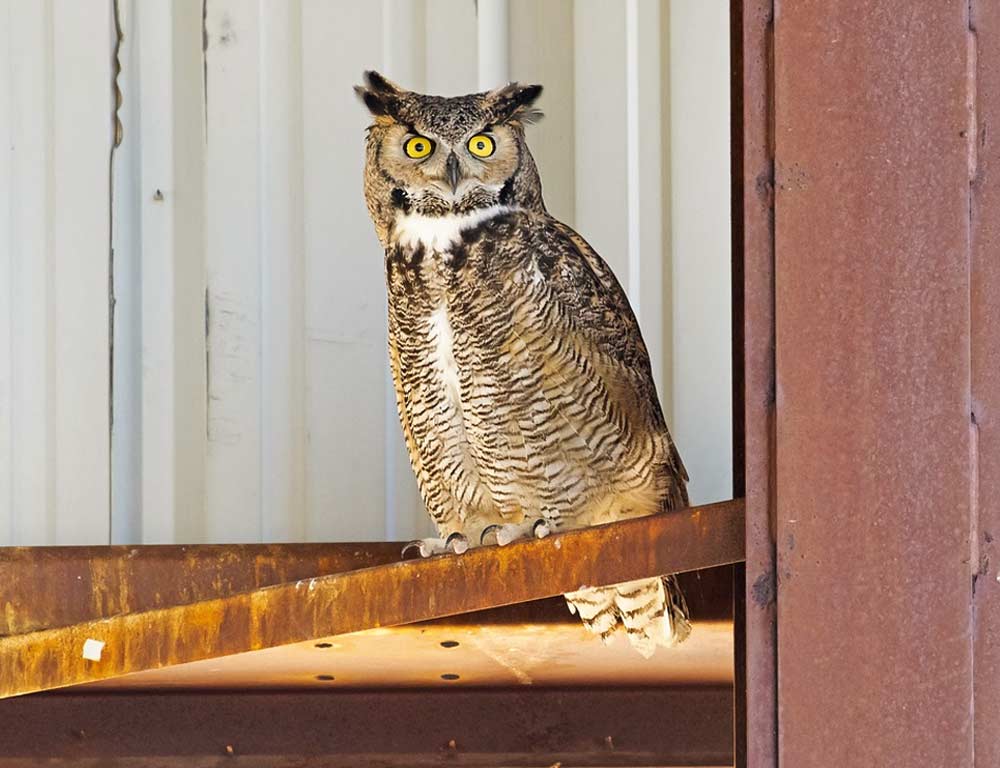
- Scientific Name: Bubo virginianus
- Population: Common and widespread
- Life Span: 5 to 15 years
- Size: 18 to 25 inches
- Weight: 2 to 5.5 pounds
- Food: Rodents, birds, mammals
- Wingspan: 3.3 to 4.8 feet
- Status: Least Concern
The Great Horned Owl, a versatile and adaptable predator, thrives across Michigan’s diverse habitats. Recognized by its prominent ear tufts and piercing yellow eyes, these owls display exceptional hunting prowess.
Their diet spans a wide array, including rodents, birds, and mammals, making them vital for pest control.
With a nocturnal lifestyle, these owls utilize their keen hearing and vision to locate prey in low-light conditions. Nesting in trees, they exhibit strong parental care.
2. Snowy Owl
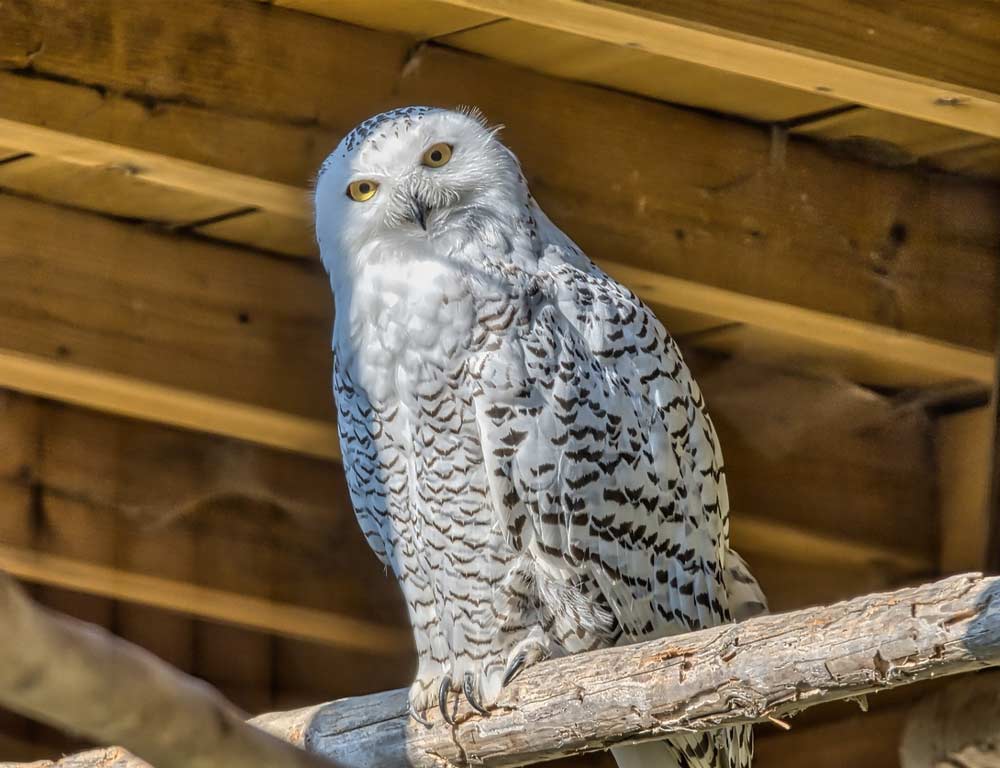
- Scientific Name: Bubo scandiacus
- Population: Variable, migratory
- Life Span: 10 years
- Size: 20 to 28 inches
- Weight: 3 to 6.6 pounds
- Food: Lemmings, small mammals, birds
- Wingspan: 4.5 to 5.5 feet
- Status: Vulnerable
The Snowy Owl, a symbol of Arctic wilderness, occasionally visits Michigan during winter migration. Sporting distinctive white plumage with dark markings, they are well adapted to frigid climates.
Primarily feasting on lemmings and small mammals, Snowy Owls showcase remarkable hunting precision. Their wide wingspan aids in long-distance flights, and they often perch on elevated spots for effective prey observation.
Climate change and habitat disturbance threaten this species, highlighting the need for conservation efforts.
3. Barn Owl
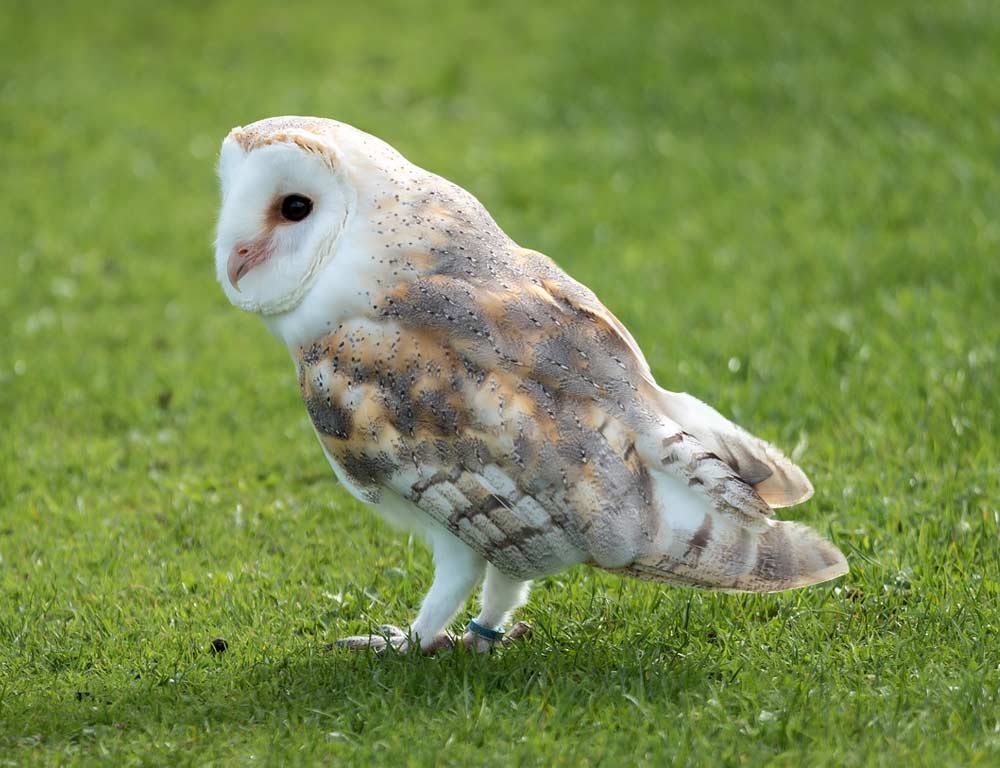
- Scientific Name: Tyto alba
- Population: Declining
- Life Span: 2 to 5 years
- Size: 12.5 to 15 inches
- Weight: 12 to 25 ounces
- Food: Small mammals, rodents
- Wingspan: 38 to 47 inches
- Status: Near Threatened
The Barn Owl, recognized by its heart-shaped facial disc, once common in Michigan, faces habitat loss challenges. Preferring open habitats for hunting, they play a crucial role in controlling rodent populations.
Their exceptional low-light vision enables efficient nighttime predation. Nesting in cavities or structures, Barn Owls exhibit unique vocalizations.
Conservation initiatives are crucial to mitigate declining populations and preserve this important component of Michigan’s biodiversity.
4. Great Grey Owl
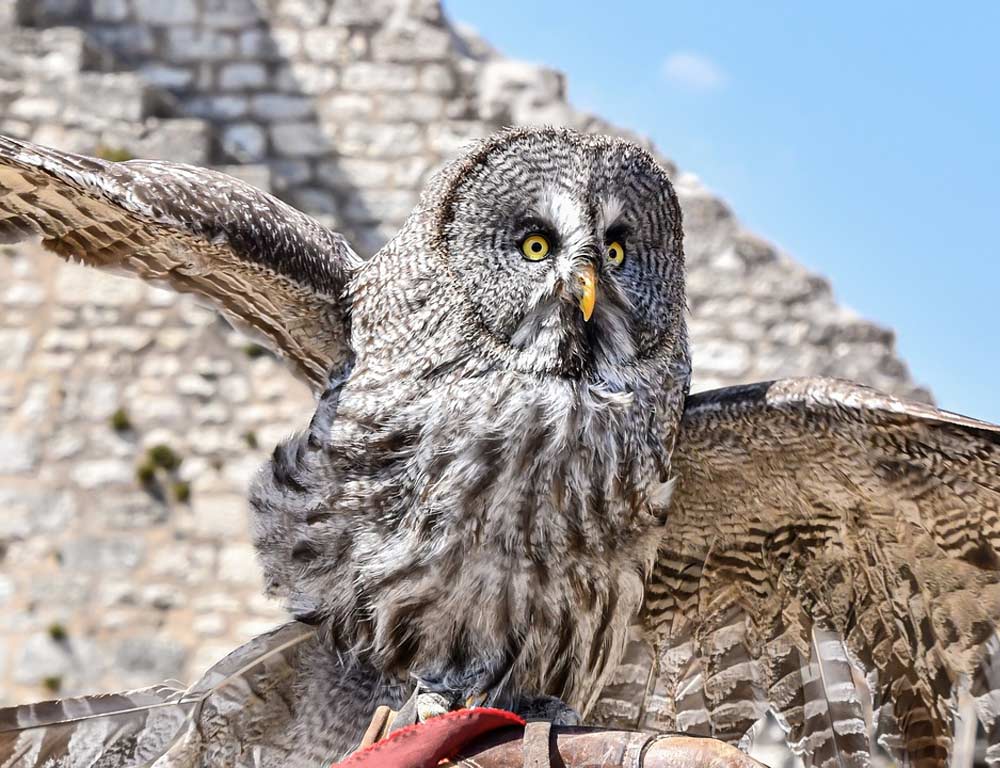
- Scientific Name: Strix nebulosa
- Population: Uncommon, northern regions
- Life Span: 8 to 10 years
- Size: 24 to 33 inches
- Weight: 1.5 to 3.5 pounds
- Food: Small mammals, birds
- Wingspan: 53 to 60 inches
- Status: Least Concern
The Great Grey Owl, an elusive and majestic inhabitant of northern forests, occasionally extends its range into Michigan. They are well-camouflaged in their wooded habitats, sporting a large facial disc and striking grey plumage.
These owls primarily hunt small mammals and birds, employing keen vision and acute hearing. Their large wingspan aids in silent flight, allowing them to surprise prey.
Due to their secluded nature and limited interactions with human activities, Great Grey Owls are considered of least concern regarding conservation status in Michigan.
5. Long-eared Owl
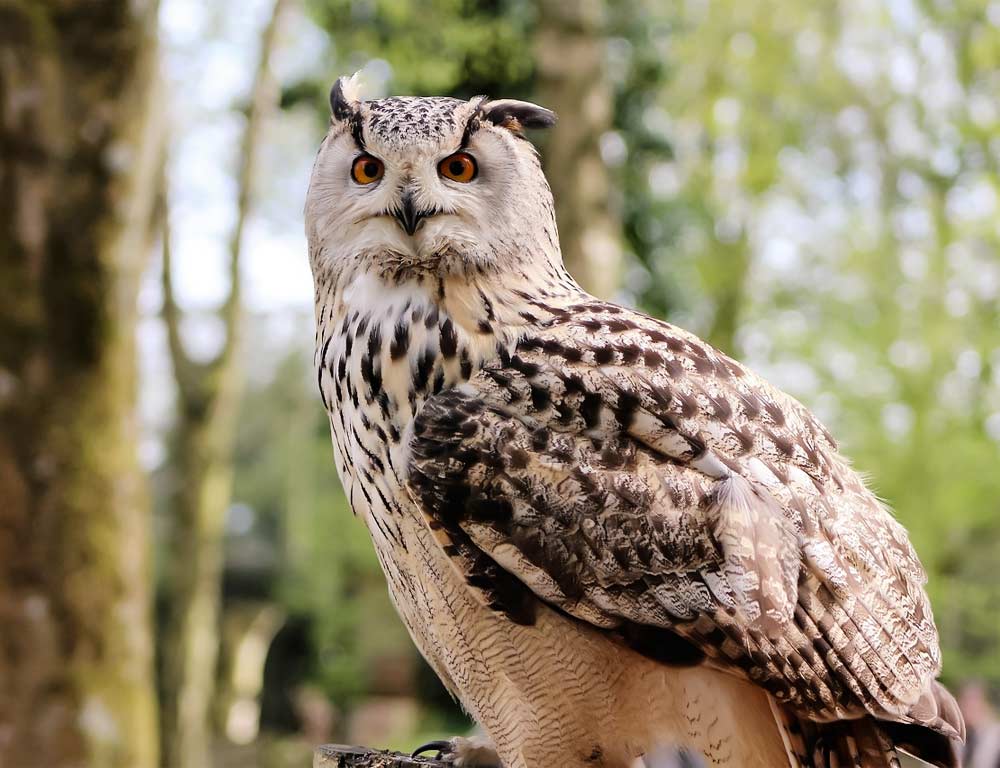
- Scientific Name: Asio otus
- Population: Declining
- Life Span: 4 to 5 years
- Size: 13 to 16 inches
- Weight: 7 to 15 ounces
- Food: Small mammals, birds
- Wingspan: 35 to 39 inches
- Status: Least Concern
The Long-eared Owl, recognized for its long tufted ear-like feathers, inhabits woodlands and coniferous forests in Michigan.
Though declining, these owls are still relatively common. Primarily nocturnal hunters, they prey on small mammals and birds.
Long-eared Owls are often found roosting in dense foliage, using their cryptic plumage for concealment during the day. Their preferred nesting sites include old nests of other birds or tree branches.
Facing threats such as habitat loss and human disturbance, conservation efforts are crucial to ensure the continued presence of Long-eared Owls in Michigan’s ecosystems. These owls contribute to the delicate balance of the food web by controlling small mammal populations.
6. Northern Saw-whet Owl
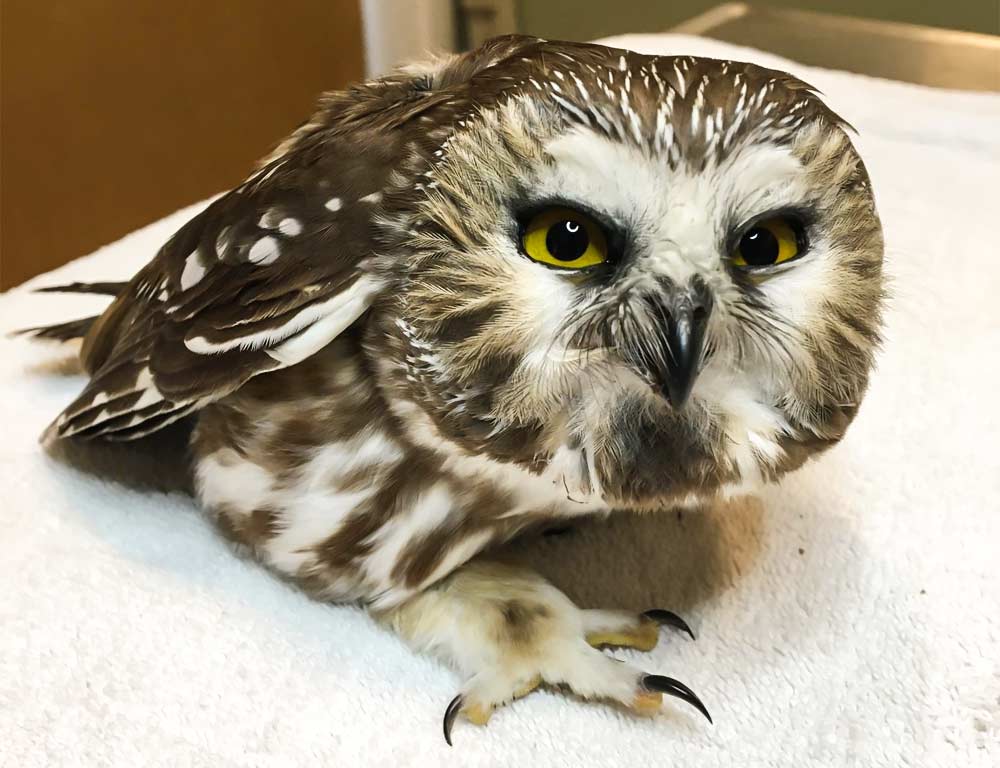
- Scientific Name: Aegolius acadicus
- Population: Stable
- Life Span: 7 to 8 years
- Size: 7 to 8 inches
- Weight: 2 to 5 ounces
- Food: Small mammals, birds, insects
- Wingspan: 16 to 18 inches
- Status: Least Concern
The Northern Saw-whet Owl, named after its distinctive “toot-toot-toot” call reminiscent of a sharpened saw, is a small but widespread owl in Michigan.
Preferring dense forests and coniferous stands, they are skilled hunters of small mammals, birds, and insects.
With a stable population, these nocturnal owls roost in tree branches during the day, relying on their excellent camouflage for protection.
They often use abandoned woodpecker nests or natural tree cavities for nesting. Their role in controlling rodent populations makes them valuable contributors to the ecosystems they inhabit.
Conservation efforts should focus on maintaining suitable habitats to ensure the persistence of the Northern Saw-whet Owl in Michigan’s diverse landscapes.
7. Boreal Owl
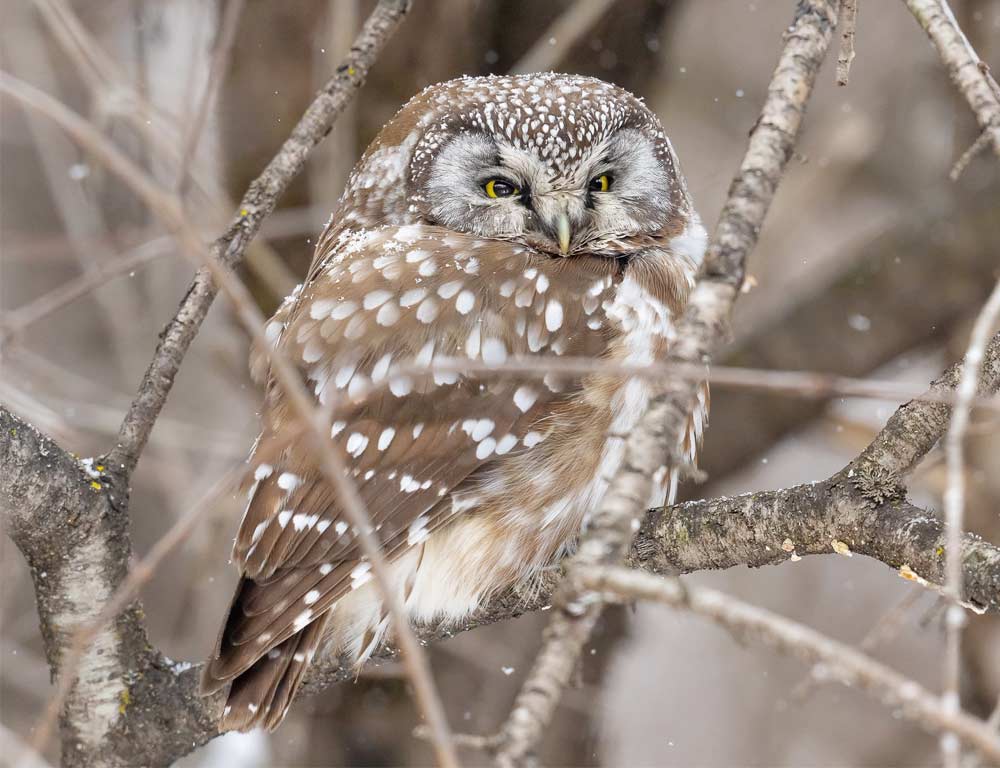
- Scientific Name: Aegolius funereus
- Population: Unknown
- Life Span: 3 to 5 years
- Size: 8.7 to 12 inches
- Weight: 3.5 to 7.7 ounces
- Food: Small mammals, birds
- Wingspan: 21 to 24 inches
- Status: Least Concern
The elusive Boreal Owl, well-adapted to northern boreal forests, occasionally visits Michigan during winter months. Although their population status is not well-documented, they are generally considered the least concern.
With a preference for mature coniferous forests, these owls primarily feed on small mammals and birds. Their nocturnal habits and inconspicuous nature make them challenging to study.
Nesting in tree cavities or using old nests of other birds, Boreal Owls demonstrate resourcefulness in utilizing available habitats.
Undisturbed, mature forests’ importance for survival underscores the need for conservation efforts.
Their role in controlling small mammal populations and contributing to the intricate web of biodiversity emphasizes the significance of protecting their habitats in Michigan’s northern regions.
8. Eastern Screech Owl
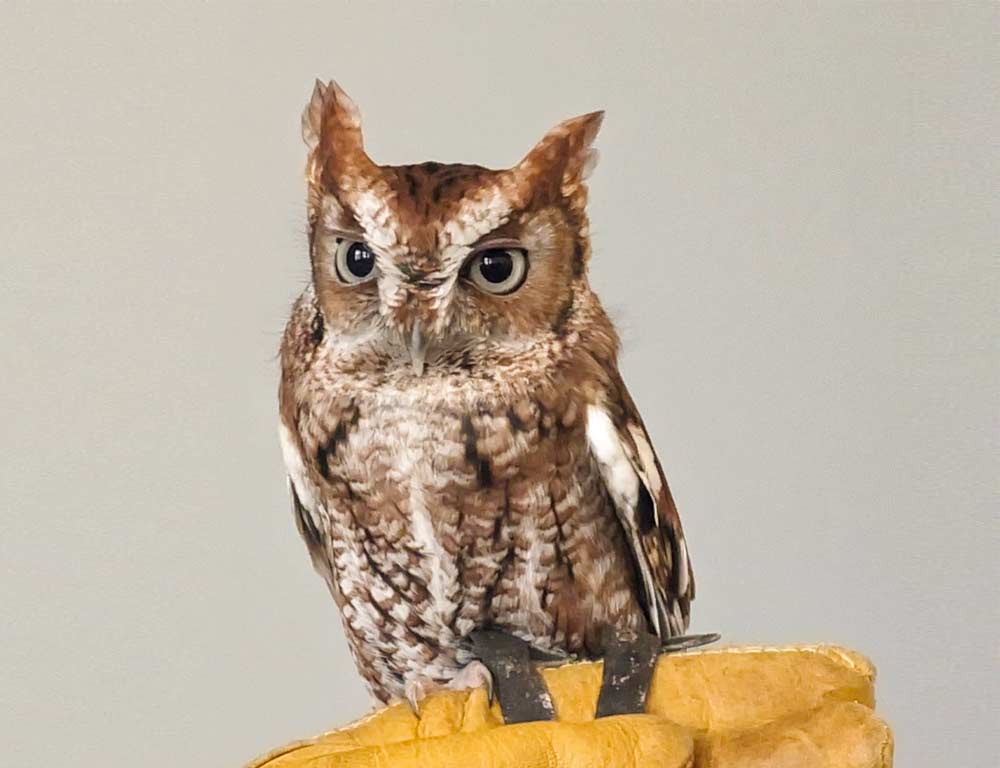
- Scientific Name: Megascops asio
- Population: Common and stable
- Life Span: 3 to 14 years
- Size: 6 to 10 inches
- Weight: 4 to 9 ounces
- Food: Insects, small mammals, birds
- Wingspan: 18 to 24 inches
- Status: Least Concern
The Eastern Screech Owl, a master of camouflage, resides in Michigan’s woodlands and suburban areas. Despite their small size, they are formidable hunters, preying on insects, small mammals, and birds.
With a preference for nesting in tree cavities or man-made boxes, these owls are adaptable to human-altered landscapes.
Their mottled plumage, which includes both red and grey color morphs, aids in blending seamlessly with their surroundings.
Nocturnal by nature, they navigate the night using exceptional hearing and vision. Given their adaptability and stable population, Eastern Screech Owls remain a fascinating and resilient part of Michigan’s avian community.
9. Barred Owl
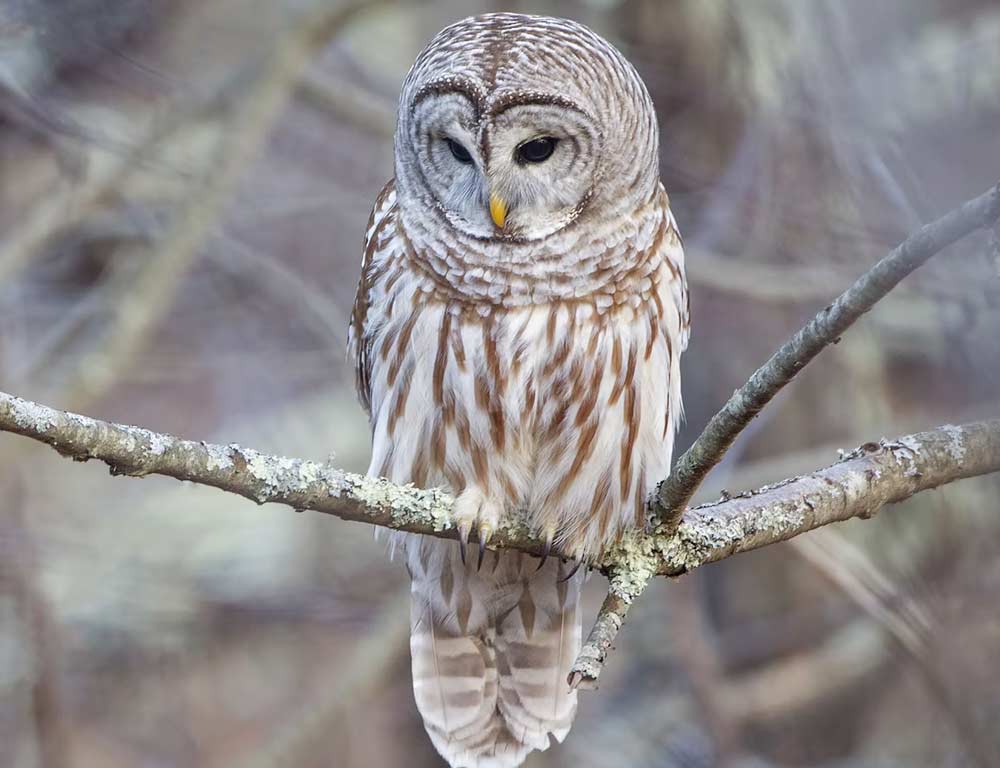
- Scientific Name: Strix varia
- Population: Stable
- Life Span: 10 years
- Size: 16 to 24 inches
- Weight: 1 to 2.3 pounds
- Food: Small mammals, birds, amphibians
- Wingspan: 38 to 50 inches
- Status: Least Concern
With its distinctive hooting call, the Barred Owl thrives in Michigan’s mature forests. Their robust build and dark eyes make them easily recognizable.
These owls are versatile predators, preying on small mammals, birds, and even amphibians.
Barred Owls often choose to nest in tree cavities or abandoned nests of other large birds. Their nocturnal activities, aided by keen senses, make them efficient hunters in low-light conditions.
With a stable population, Barred Owls contribute to the ecological balance of Michigan’s woodlands, showcasing the resilience of these adaptable and resourceful birds.
10. Short-eared Owl
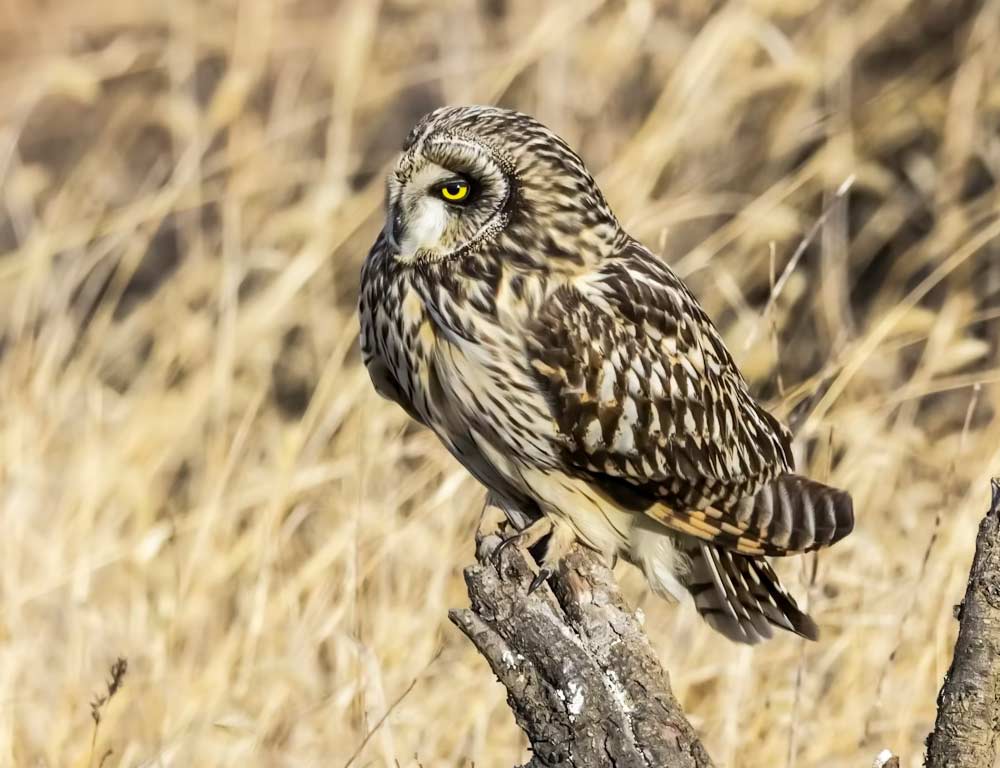
- Scientific Name: Asio flammeus
- Population: Declining
- Life Span: 3 to 5 years
- Size: 13 to 17 inches
- Weight: 7 to 17 ounces
- Food: Small mammals, birds
- Wingspan: 33 to 43 inches
- Status: Near Threatened
The Short-eared Owl, a ground-nesting species, faces habitat loss challenges in Michigan. Preferring open landscapes, these owls are adapted to hunt small mammals and birds.
Their distinctive facial disk enhances sound detection, which is crucial for locating prey in grassy habitats. Known for their diurnal hunting habits, Short-eared Owls are active during daylight hours, a behavior uncommon among owls.
With declining populations, conservation efforts are imperative to address the threats posed by habitat alteration and human activities.
These owls play a vital role in controlling rodent populations, making their preservation essential for maintaining ecological balance in Michigan’s diverse ecosystems.
Ecological Significance of Owls of Michigan
Owls in Michigan play a pivotal role in maintaining ecological balance. As nocturnal predators, they influence various aspects of the ecosystem.
Explore the ecological significance of these wise birds as they contribute to the intricate web of life in Michigan’s diverse habitats.
Natural Pest Control
Owls, such as the Great Horned Owl and Barn Owl, are voracious hunters of rodents and small mammals, serving as natural pest controllers and aiding in crop protection.
Biodiversity Indicators
The presence and diversity of owl species in Michigan serve as indicators of ecosystem health, reflecting the abundance of prey species and the overall balance of the environment.
Silent Stalkers in the Night
With specialized feathers that reduce flight noise, owls like the Barred Owl and Eastern Screech Owl are stealthy predators, contributing to the regulation of nocturnal prey populations.
Seed Dispersal
Owls unintentionally contribute to seed dispersal by consuming small mammals and birds, which may have ingested seeds. This indirect role aids in maintaining plant diversity in various habitats.
Cultural and Educational Value
Owls hold cultural significance and capture the public’s imagination. Their presence fosters awareness about the importance of preserving natural habitats and the need for conservation efforts in Michigan.
Indicators of Environmental Changes
Sensitive to environmental changes, owls, like the Short-eared Owl, can indicate environmental shifts, including habitat alterations and climate change, prompting a need for proactive conservation measures.
Wrapping Up
In the tapestry of Michigan’s ecosystems, owls emerge as silent stewards, intricately woven into the ecological narrative.
From pest control to cultural significance, these birds of prey embody the delicate balance required for a thriving environment.
Their nocturnal presence, diverse habits, and role as biodiversity indicators emphasize the importance of protecting their habitats.
As Michigan’s landscapes evolve, understanding and conserving these wise creatures become imperative for sustaining the rich biodiversity they signify. Thank you very much.